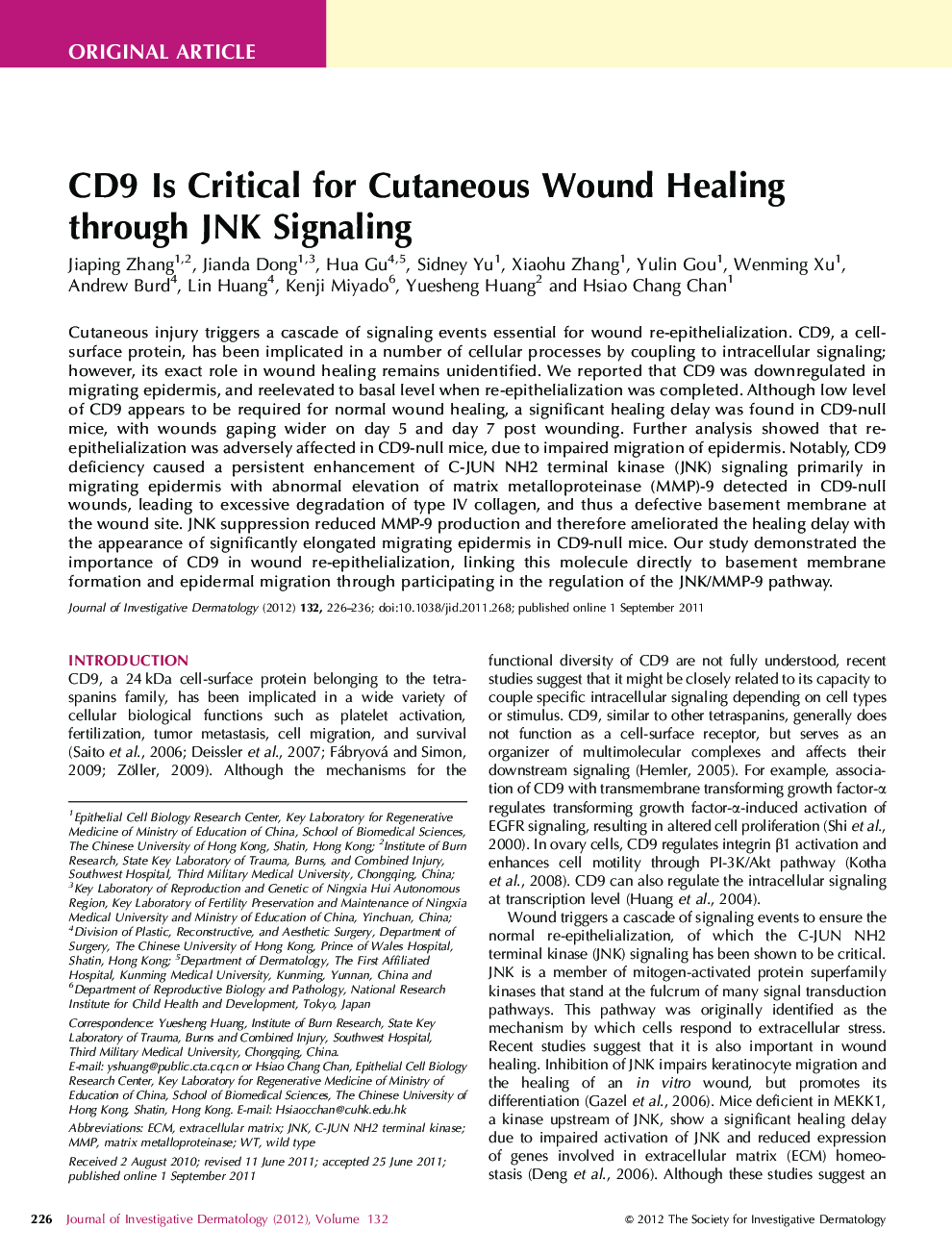| Article ID | Journal | Published Year | Pages | File Type |
|---|---|---|---|---|
| 6077733 | Journal of Investigative Dermatology | 2012 | 11 Pages |
Abstract
Cutaneous injury triggers a cascade of signaling events essential for wound re-epithelialization. CD9, a cell-surface protein, has been implicated in a number of cellular processes by coupling to intracellular signaling; however, its exact role in wound healing remains unidentified. We reported that CD9 was downregulated in migrating epidermis, and reelevated to basal level when re-epithelialization was completed. Although low level of CD9 appears to be required for normal wound healing, a significant healing delay was found in CD9-null mice, with wounds gaping wider on day 5 and day 7 post wounding. Further analysis showed that re-epithelialization was adversely affected in CD9-null mice, due to impaired migration of epidermis. Notably, CD9 deficiency caused a persistent enhancement of C-JUN NH2 terminal kinase (JNK) signaling primarily in migrating epidermis with abnormal elevation of matrix metalloproteinase (MMP)-9 detected in CD9-null wounds, leading to excessive degradation of type IV collagen, and thus a defective basement membrane at the wound site. JNK suppression reduced MMP-9 production and therefore ameliorated the healing delay with the appearance of significantly elongated migrating epidermis in CD9-null mice. Our study demonstrated the importance of CD9 in wound re-epithelialization, linking this molecule directly to basement membrane formation and epidermal migration through participating in the regulation of the JNK/MMP-9 pathway.
Related Topics
Health Sciences
Medicine and Dentistry
Dermatology
Authors
Jiaping Zhang, Jianda Dong, Hua Gu, Sidney Yu, Xiaohu Zhang, Yulin Gou, Wenming Xu, Andrew Burd, Lin Huang, Kenji Miyado, Yuesheng Huang, Hsiao Chang Chan,
